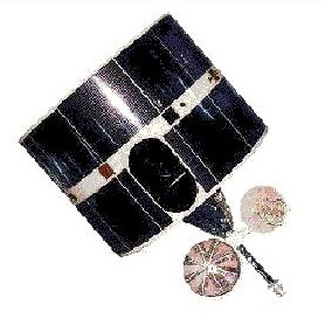Fengyun 2

Fengyun is China’s Meteorological Satellite Program, consisting of at least one operational satellite in Geostationary Orbit and several satellites in polar orbits, creating a satellite constellation to monitor the Chinese and surrounding territory to deliver timely data relevant for weather forecasting and nowcasting. The program saw its first launch back in 1988 when the Fengyun 1A satellite was launched into a Sun-Synchronous Orbit – Fengyun 1B followed in 1990.
The development of the Fengyun 2 satellites as the Geostationary component of the constellation started in the 1980s and the first satellite was ready for launch in 1994, however, when being loaded with propellants for flight, the satellite exploded, killing one technician, injuring 20 more and setting back the entire program that went through a re-design of the satellite’s propulsion system. As a result, the first Fengyun 2 satellite launched three years later than originally planned. A total of six FY-2 satellites have been launched to date, entering positions at 86.5 and 105° East in Geostationary Orbit. Of the FY-1 polar orbiting series, four satellites have been launched with FY-1C making the news in 2007 when it was destroyed as part of a anti-satellite test conducted by the Chinese, creating a large debris cloud in orbit.

The FY-1 generation of satellites were succeeded by the FY-3 satellites, the first of which launched in 2008 and was followed by two more in 2010 and 2013 to keep up a steady flow of meteorological data from a Low Earth Orbit. The most recent FY-2 launch took place in January 2012. The FY-4 series of Geostationary Satellites is currently being developed and will take over from FY-2 in the coming years with the first launch as early as 2015.
The FY-2 spacecraft are spin-stabilized satellites rotating at 100 RPM with a de-spun antenna unit and body-mounted solar panels for power generation. Developed by the Shanghai Academy of Space Flight Technology (SAST) and China Academy of Space Technology (CAST), the cylindrical satellite bus measures about 2.1 meters in diameter and 4.5 meters in length. Overall, the satellite has a launch mass around 1,380 Kilograms and an in-orbit mass of 680 Kilograms using a solid-fueled apogee kick motor to inject itself into Geostationary Orbit with a liquid-fueled propulsion system for orbital adjustments and stationkeeping.
Fengyun 2G’s main instrument is the Stretched Visible and Infrared Spin Scan Radiometer that delivers daylight cloud imagery in the visible wavelengths, round the clock infrared cloud imagery which also allows the determination of cloud top temperature, sea surface temperature and wind field distribution. The instrument covers a visible band at 0.5 to 1.0 µm, a series of infrared bands around 3-5 and 10.5-12.5 µm and a dedicated water vapor channel at 6.2-7.6µm.
FY-2G’s main instrument was designed to meet the data requirements by combining a favorable spectral coverage, spectral resolution, spatial resolution and radiometric accuracy. The satellite covers the entire disk of the Earth.
Data from FY-2 is used to determine atmospheric temperature profiles, cloud water content, precipitation rate, reflectance data for vegetation assessments, sea surface temperature, ocean imagery, land surface temperature and imagery. Image resolution reaches 1.25 and 5 Kilometers for the visible and infrared channels.
Additionally, the Fengyun 2G satellite carries a Space Environment Monitor, a miniaturized instrument that measures the radiation environment in near-Earth space and can be used for space weather assessments and research.
Also, the satellite sports a Solar X-Ray Monitor and a Data Collection Service Terminal that uses a UHF/S-Band Terminal that is operated to deliver acquired data to various users on the ground in real time via low data rate communications to enable a rapid distribution and processing of data by those who need it.
